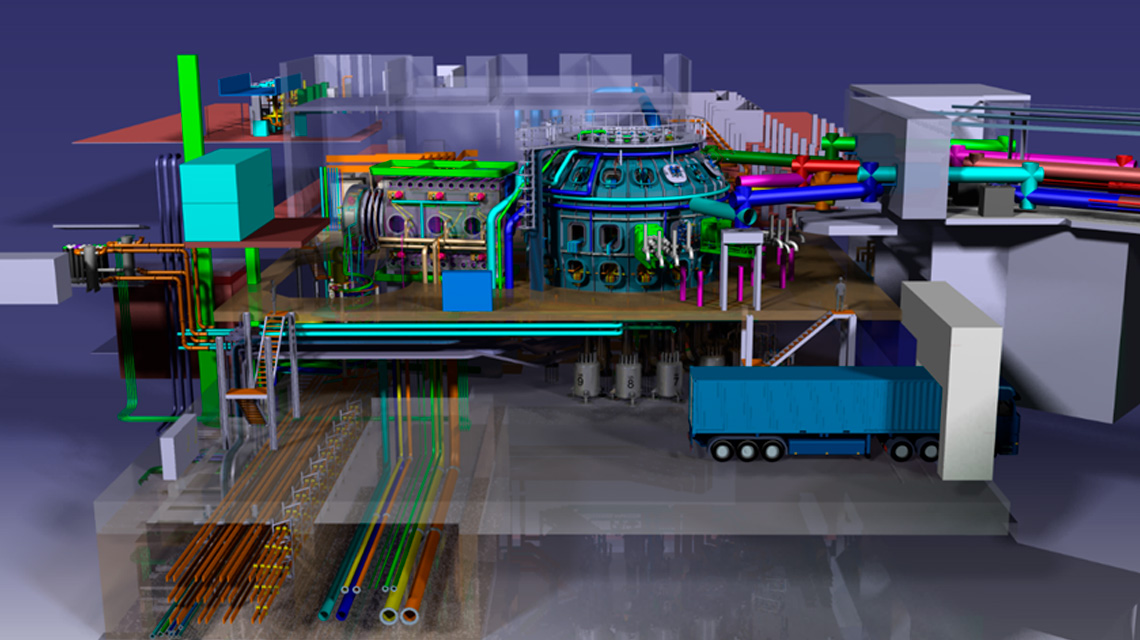Italian National Agency for New Technologies, Energy and Sustainable Economic Development

Energy: ENEA designs innovative 'lifesaver' for fusion reactors
ENEA has designed a world-unique life-saving device to protect superconducting magnets in future nuclear fusion reactors from overheating (quench), which it will be tested for the first time on the DTT tokamak, the infrastructure for fusion energy research under construction at the Frascati Research Center (Rome).
“Compared to the magnet protection systems mounted on the ITER and JT-60SA, our devices feature technical innovations which make them safer, faster and more efficient. And, at the moment, they are a unique research innovation globally", explained Pietro Zito at the ENEA Diagnostics Laboratory of the Fusion and Technologies for Nuclear Safety Department.
The main advance in the new FDU (Fast Discharge Unit) devices consists in replacing steel resistors banks [1] with varistors[2], i.e. electrical devices whose resistance - unlike the former – varies with the voltage. In particular, the varistors used are made of silicon carbide, a ceramic and semiconductor material which is widely used especially in high power, high frequency and high temperature electronics. These elements can discharge the huge amount of energy of the magnets in about ten seconds with times reduced by up to 70% compared to traditional resistances, reducing the electrical and thermal stress on magnets and other components of the system: voltages and temperatures are reduced by about 20%.
A fully electronic switch with no moving parts allows quick intervention times (less than one thousandth of a second). Additional protection is provided by an electronical 'back-up' switch, intervening even in the event of failure of the main switch, thus ensuring high reliability, reduced maintenance and compact dimensions.
Superconductors produce very high magnetic fields which trap the incandescent plasma at the record temperature of 150 million degrees Celsius, keeping it away from the reactor walls. However, they may be subject to quench, a sudden loss of superconductivity (which occurs at about 270 °C below zero). This unexpected transition to the normal state, with consequent overheating, can rapidly spread to the entire magnet and, given the high energies involved, can cause permanent damage to the magnet and the entire system.
In order to avoid this type of damage the considerable magnetic energy stored in the system must be extracted as quickly as possible through the FDUs, which force the current of the circuit to flow in dissipative elements, electrical resistances or varistors. This apparently trivial mechanism is made technologically very difficult by the fact that it is necessary to interrupt a direct current up to 43 kA, discharging a magnetic energy of the order of 2 GJ in a few seconds (like simultaneously discharging 800 car batteries). Therefore, it can be said that the FDUs are the main protection system of a fusion plant or rather, they constitute its life-saving device”, explained Alessandro Lampasi, ENEA researcher at the Consortium for the creation of DTT.
The three UDFs to protect the eighteen toroidal magnets of DTT will be built by the Italian company OCEM Energy Technology, specialized in electrical systems for experimental plants (including several fusion reactors across the world), which was awarded an 8 million euro contract. Following factory tests, the first FDU is expected in Frascati by the end of 2023. The other two will be ready in the following years to enable the new DTT system to start operating. DTT is a tokamak with superconducting magnets based on the most advanced technological standards worldwide.
Its magnetic system includes 18 Nb3Sn toroidal field coils, 6 modules for the central solenoid and 2 Nb3Sn poloidal field coils, 4 NbTi poloidal field coils. Its target is to provide critical information to exploit nuclear fusion as an energy source. In particular, in accordance with the European Roadmap on Fusion, the DTT will focus on the study of systems to manage the heat produced by the processes taking place in the plasma. Since the thermal loads can reach temperatures comparable with that of the Sun's surface, the removal of heat and its correct disposal, without deteriorating the materials and components, is one of the main criticalities and challenges in the construction of commercial fusion reactors nuclear. A further challenge of the DTT is to verify the superconducting magnets at the working temperature (about -270 °C) and at full current (>30 kA) at the 'Frascati Coil Cold Test Facility', still under construction in the ENEA Frascati Research Center. The first tests are expected to start at the end of 2023.
The consortium company (SCARL) for the construction of the DTT comprises several scientific institutions and Italian companies, which, in addition to ENEA, the major shareholder, include the Eni, Cnr, INFN, CREATE Consortium, RFX Consortium, Turin Polytechnic, University of Milan Bicocca, University of Rome Tor Vergata, University of Tuscia. The Lazio Region contributes to the DTT with 25 million euro and the construction of the necessary infrastructural works like the 300 MW 150 kV power line) and international partners such as the European consortium EUROfusion give their support; the DTT Technical-Scientific Committee comprises representatives of the main international institutions in the sector (including ITER, F4E, KIT, CEA, PPPL, QST, ASIPP, MIT) to provide project guidance, consultancy and monitoring.
Photoes and video
For more information please contact:
Pietro Zito - ENEA Diagnostic Laboratory of the Fusion and Nuclear Safety Technologies Department -
Alessandro Lampasi, ENEA researcher seconded to the Consortium for the creation of the DTT -
https://www.sciencedirect.com/science/article/pii/S0920379623000261
https://www.sciencedirect.com/science/article/pii/S092037962100524X?via%3Dihub
Notes
[1] Resistors are electronic components with a specific, never-changing electrical resistance. The resistance controls how much electric charge flows through a circuit. They are passive devices, meaning they only consume energy (and cannot generate it).
[2] "Varistor" is a combination of the words "variable" and "resistance", and that is exactly what it does: it resists the passage of electricity based on that energy’s intensity. Its main role is to protect a circuit from high voltage surges.
